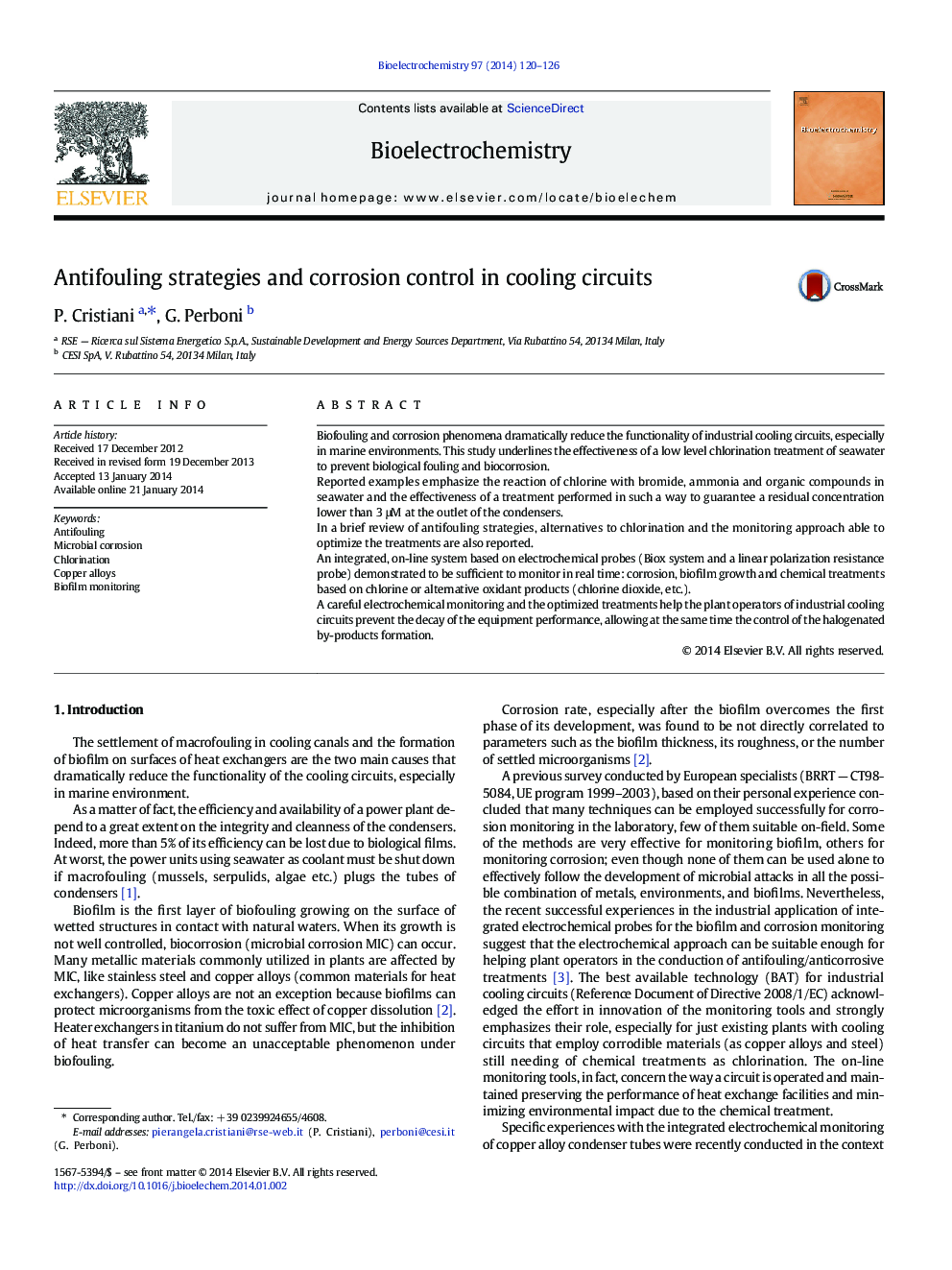| Article ID | Journal | Published Year | Pages | File Type |
|---|---|---|---|---|
| 1267998 | Bioelectrochemistry | 2014 | 7 Pages |
•A brief review of antifouling techniques used in industrial cooling circuits is presented.•The trend of chlorine degradation in seawater is reported as function of chlorine dosage.•Data from electrochemical monitoring in field of seawater treatment and corrosion•Without chemical treatment, unprotected copper alloys could suffer severe microbial corrosion.
Biofouling and corrosion phenomena dramatically reduce the functionality of industrial cooling circuits, especially in marine environments. This study underlines the effectiveness of a low level chlorination treatment of seawater to prevent biological fouling and biocorrosion.Reported examples emphasize the reaction of chlorine with bromide, ammonia and organic compounds in seawater and the effectiveness of a treatment performed in such a way to guarantee a residual concentration lower than 3 μM at the outlet of the condensers.In a brief review of antifouling strategies, alternatives to chlorination and the monitoring approach able to optimize the treatments are also reported.An integrated, on-line system based on electrochemical probes (Biox system and a linear polarization resistance probe) demonstrated to be sufficient to monitor in real time: corrosion, biofilm growth and chemical treatments based on chlorine or alternative oxidant products (chlorine dioxide, etc.).A careful electrochemical monitoring and the optimized treatments help the plant operators of industrial cooling circuits prevent the decay of the equipment performance, allowing at the same time the control of the halogenated by-products formation.
